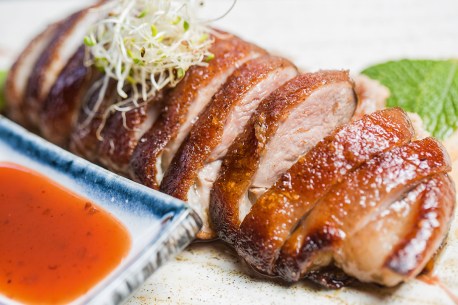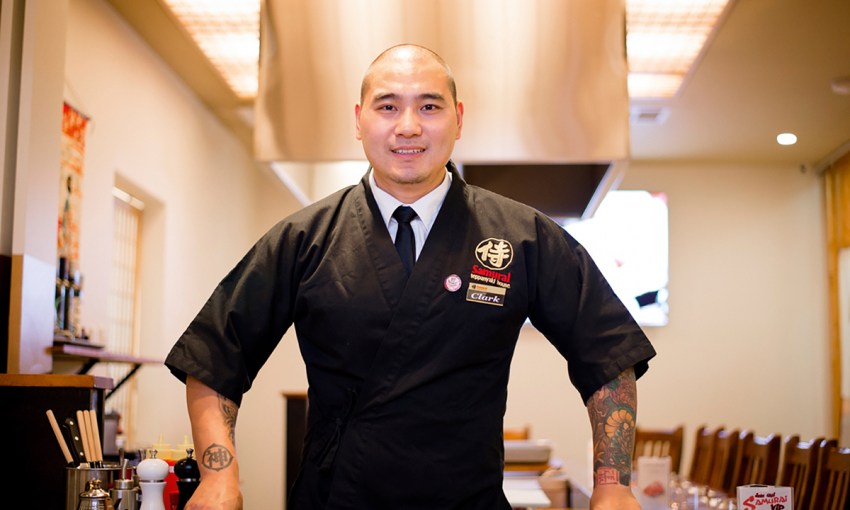Tattooed teppanyaki chef Clark Zhang uses the very best Australian produce to perfect his culinary art.
Three minutes with … Clark Zhang of Samurai Teppanyaki House
 What led you to open Samurai Teppanyaki House?
What led you to open Samurai Teppanyaki House?
We started our small business on The Parade in Norwood in a tiny place with only 20 seats. We built up our reputation and regular customers, so when a King William Road location became available we took a big step up to a large restaurant with 65 seats, a private function room and an interior Zen garden. Now we can host more people who want to enjoy the teppanyaki experience.
Describe the experience of teppanyaki dining?
Teppanyaki cooking is an art. You can see, hear and smell all the dishes right before you taste them, which means you can be sure any special dietary requirements are done properly. Watching the chef cook and perform professionally is also a great experience. Traditional teppanyaki is different to the American Benihana style of juggling and throwing food to customers. All chefs at Samurai are well-trained and focused on cooking and service.
Being from China, what attracted you to the Japanese style of cooking?
I have been interested in teppanayki cooking since my first time visiting Shanghai when I was young. Watching the chef at work was fascinating. I had a chance to work in a Japanese restaurant and then a hotel, before training and working in Japan. I like to believe cooking is irrespective of your nationality. My master told me that as long as you do the right things and love what you’re doing, you can be very good at. I’m still carrying on his words to encourage my team and myself to improve every day.
How do you become a qualified teppanyaki chef?
To become qualified by the Japan Teppanyaki Association you need to work as a teppanyaki chef for at least five years, work as an executive or owner-chef for five years and pass both theory and practical tests.
What do you most enjoy about cooking face-to-face with your guests?
Talking to customers, understanding their needs and meeting their personal requirements. The chef’s job is not only about cooking, it’s also about caring. When you see the customer walking out with a smile, that is the best accomplishment and compliment.
What is your favourite dish to cook for guests?
Our signature dish is duck breast with plum sauce. It takes about five days to prepare: two days soaking in sake and three days in a cool room to air-dry the skin. It is then grilled at a low temperature and slow cooked for about 20 to 30 minutes. The duck skin is super crispy and the meat still very tender.
Where do you source your produce?
More than 95 per cent of our produce is Australian, with some special ingredients from overseas. We have many fresh South Australian seafood and meat suppliers and we also get fresh freight from Sydney for things like eastern rock lobster, jade tiger abalone and A5 Japanese wagyu beef.
Tell me about your team of chefs?
We have seven teppanyaki chefs on our team, all well-trained by myself and my partner Jack. Everyone is of equal standard, but each with their own style. That’s why our chefs each have their regular customers who can request a particular chef when they make a booking.
What inspired your tattoos?
Tattoo is my personal hobby and each tattoo on my body has its own meaning and story. My philosophy is that life is just like a tattoo; not everything is easy, you need to be patient and it takes time. With pain and perseverance, you have something beautiful at the end.
This story first appeared in the May 2019 issue of SALIFE.



